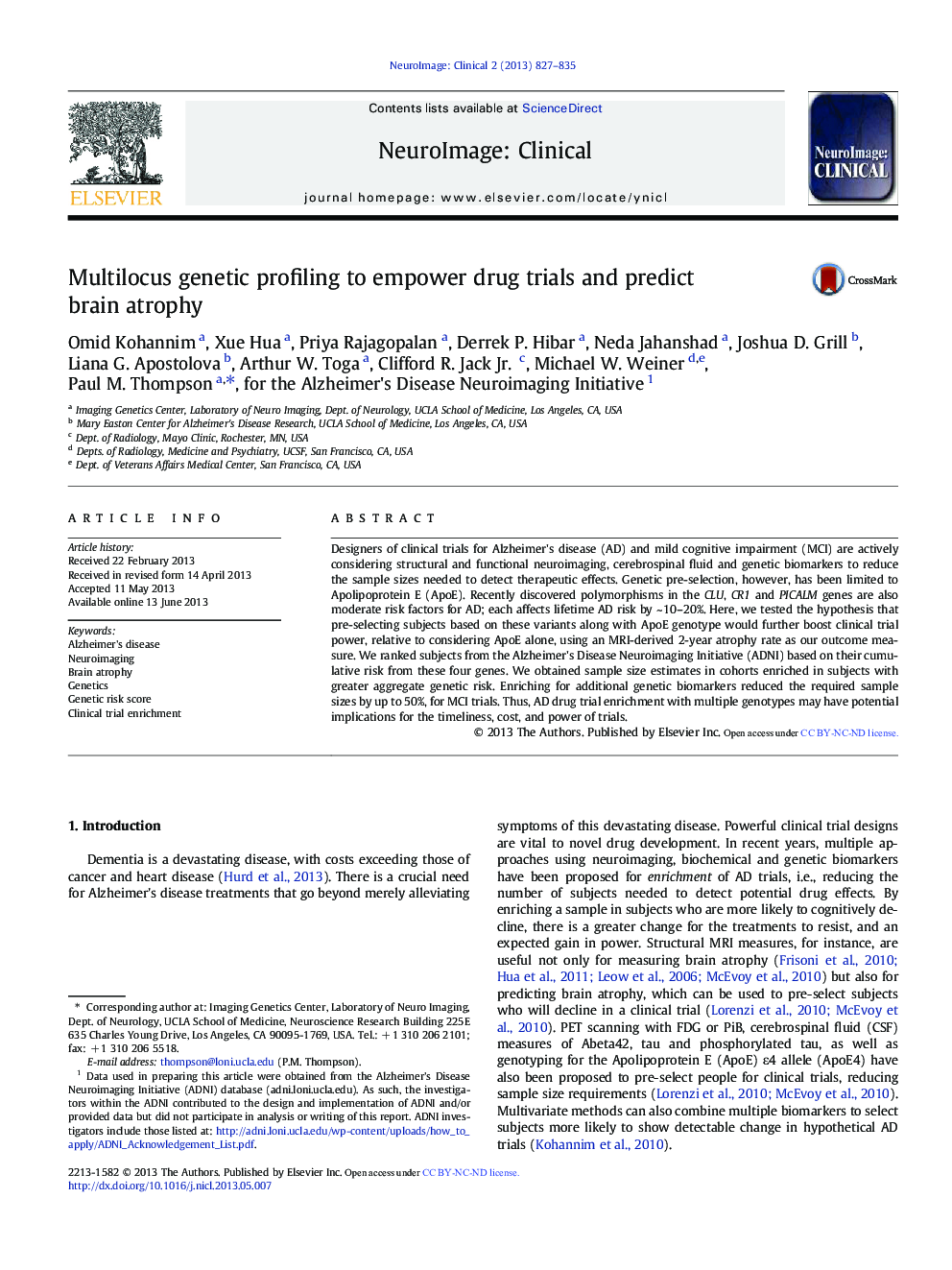| Article ID | Journal | Published Year | Pages | File Type |
|---|---|---|---|---|
| 3075567 | NeuroImage: Clinical | 2013 | 9 Pages |
•ApoE genotype status helps enrich MCI trials, using a structural MRI outcome measure.•CLU, PICALM and CR1 risk genes boost potential MCI trial power beyond ApoE alone.•CLU, PICALM and CR1 show significant, aggregate effects on TBM maps of brain atrophy.
Designers of clinical trials for Alzheimer's disease (AD) and mild cognitive impairment (MCI) are actively considering structural and functional neuroimaging, cerebrospinal fluid and genetic biomarkers to reduce the sample sizes needed to detect therapeutic effects. Genetic pre-selection, however, has been limited to Apolipoprotein E (ApoE). Recently discovered polymorphisms in the CLU, CR1 and PICALM genes are also moderate risk factors for AD; each affects lifetime AD risk by ~ 10–20%. Here, we tested the hypothesis that pre-selecting subjects based on these variants along with ApoE genotype would further boost clinical trial power, relative to considering ApoE alone, using an MRI-derived 2-year atrophy rate as our outcome measure. We ranked subjects from the Alzheimer's Disease Neuroimaging Initiative (ADNI) based on their cumulative risk from these four genes. We obtained sample size estimates in cohorts enriched in subjects with greater aggregate genetic risk. Enriching for additional genetic biomarkers reduced the required sample sizes by up to 50%, for MCI trials. Thus, AD drug trial enrichment with multiple genotypes may have potential implications for the timeliness, cost, and power of trials.
